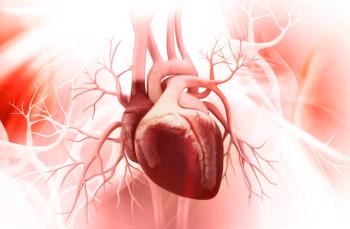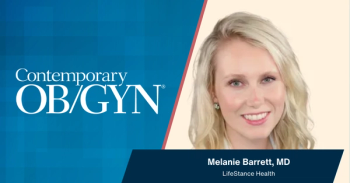Takeaways
Cardiovascular disease remains the leading cause of death in women, and most cases are preventable through early and aggressive risk management.
Midlife women are frequently undertreated for hypertension, dyslipidemia, and diabetes despite equal benefit from evidence-based therapies.
Earlier, sex-specific prevention strategies—including nonstatin and diabetes therapies—are essential to improving cardiovascular outcomes.
Erin Donnelly Michos, MD, professor of medicine, Division of Cardiology, Johns Hopkins School of Medicine, and director of Women’s Cardiovascular Health and associate director of Preventive Cardiology at the Johns Hopkins Ciccarone Center for the Prevention of Cardiovascular Disease in Baltimore, Maryland, presented on “Primary Prevention of Cardiovascular Disease in Women: Blood Pressure, Lipids, and Diabetes” at The Menopause Society's 2025 Annual Meeting. She spoke with Contemporary OB/GYN about improving cardiovascular disease prevention in women through earlier intervention, better hypertension and lipid management, and appropriate use of nonstatin and diabetes therapies.
Contemporary OB/GYN: Are current risk calculators adequately calibrated for midlife and postmenopausal women, or are we underestimating their risk?
Michos: Cardiovascular disease is still the leading cause of death in women, and we think about 90% of cardiovascular disease as being due to modifiable, preventable factors. The best intervention is prevention.
It is important to take a risk assessment. We have tools such as the new American Heart Association PREVENT score to estimate short-term risk over the next 10 years and longer-term risk over 30 years. [However,] these are just a starting framework. There are still limitations, as several factors are not included in these calculators, such as premature menopause, a history of adverse pregnancy outcomes, elevated inflammation markers such as high-sensitivity C-reactive protein or lipoprotein(a), or a family history of premature coronary disease. It’s really important that we consider a holistic approach and these risk enhancers, because many women are at higher risk than the calculators estimate, leading to undertreatment.
Contemporary OB/GYN: What is the current state of hypertension management among midlife women, and where can we improve?
Michos: The majority of women—more than half of those in midlife—have hypertension. Unfortunately, less than 25% [of them] have their blood pressure under control. Blood pressure is a risk factor for both men and women, but cardiovascular risk begins at lower thresholds for women. Even though we don’t yet have sex-specific cut points for blood pressure, maybe we should, because women are at risk even at lower levels.
The 2025 American Heart Association hypertension guidelines emphasize that normal blood pressure is less than 120/80 mm Hg. Stage 1 hypertension is defined as 130 to 139/80 to 89 mm Hg, and stage 2 is 140/90 mm Hg or higher. All patients with stage 2 hypertension should receive pharmacologic therapy. Those with stage 1 hypertension and a 10-year PREVENT score of more than 7.5%, diabetes, or chronic kidney disease should also be treated. Lifestyle modification is foundational, but many women will still require pharmacologic therapy—and women benefit just as much as men when treated, though they often remain undertreated.
Contemporary OB/GYN: How should lipid management be approached in menopausal women, especially given new nonstatin therapies?
Michos: There is overwhelming evidence that low-density lipoprotein [LDL] cholesterol and apolipoprotein B are causally related to atherosclerotic cardiovascular disease. Lipids matter as much—if not more—in women than men. For every 40 mg/dL reduction in LDL, you can reduce major cardiovascular events by about 22%. Statins are first-line therapy, but women benefit equally from all LDL-lowering therapies, including nonstatin oral and injectable agents.
Women with familial hypercholesterolemia are at particularly high risk; about 30% of untreated women will experience myocardial infarction before age 60. We must minimize time off therapy because the total years of exposure to elevated lipoprotein levels matter. During menopause transition, cholesterol and lipoprotein(a) levels rise, worsening cardiometabolic patterns. Lipid management is critical during this stage.
Contemporary OB/GYN: How significant are nonstatin therapies, and why is it important that trials include sufficient numbers of women?
Michos: Statins remain our first-line therapy, but they’re not the only game in town. What really matters is the degree of LDL and apolipoprotein B lowering: Proportional reductions translate into proportional decreases in cardiovascular risk, regardless of therapy type. This gives us more options, particularly because women are more likely to report statin-associated symptoms and discontinue therapy.
Combination therapy can be beneficial. The RACING trial [NCT03044665], for example, compared moderate-intensity rosuvastatin 10 mg plus ezetimibe 10 mg vs high-intensity rosuvastatin 20 mg. The combination achieved better LDL control, similar reductions in cardiovascular events, and fewer discontinuations due to [adverse] effects. It’s about providing patients with options to achieve their LDL goals and reduce cardiovascular risk.
Contemporary OB/GYN: How does diabetes contribute to cardiovascular risk in women, and how should it be managed?
Michos: Diabetes is slightly more prevalent in men, but when women have diabetes, it confers a greater relative risk—about a 4-fold increased risk of myocardial infarction compared with a 2-fold risk in men. Women tend to have higher BMI and more metabolic risk factors at diagnosis.
Women benefit just as much from preventive therapies, including SGLT2 inhibitors and GLP-1 [glucagon-like peptide 1] receptor agonists, both of which reduce major cardiovascular events. Real-world data suggest women may even experience greater benefit from GLP-1 receptor agonists. All adults [older than] 40 with diabetes should be on a statin, and for those with additional cardiovascular risk, we should prioritize glucose-lowering agents that confer cardiovascular protection.
Contemporary OB/GYN: What paradigm shift is needed to prioritize cardiovascular prevention in women?
Michos: We need to start prevention earlier. Too often, we intervene too late—after atherosclerosis has already developed. We gain more life years if we start with moderate lipid reduction earlier than if we begin high-intensity therapy later. The key is primordial prevention—optimizing cardiovascular health before midlife. Women who enter menopause with better cardiometabolic health have better long-term outcomes and longevity.
Contemporary OB/GYN: Is there anything else clinicians should know from your presentation?
Michos: Women remain at risk for cardiovascular disease; it’s still their No. 1 health threat. Lipids, blood pressure, and diabetes are additive risk factors. Women benefit from treatment, yet remain undertreated. They’re often presumed to be at lower risk because of sex, but women with familial hypercholesterolemia or diabetes lose that “female advantage” and experience early-onset [cardiovascular disease] like men. Clinicians should not assume women are lower risk; they should be treated according to guideline recommendations, without regard to sex.
Reference
Donnelly Michos E. Primary prevention of cardiovascular disease in women: blood pressure, lipids, and diabetes. Presented at: The Menopause Society’s 2025 Annual Meeting; October 21–25, 2025; Orlando, FL.











